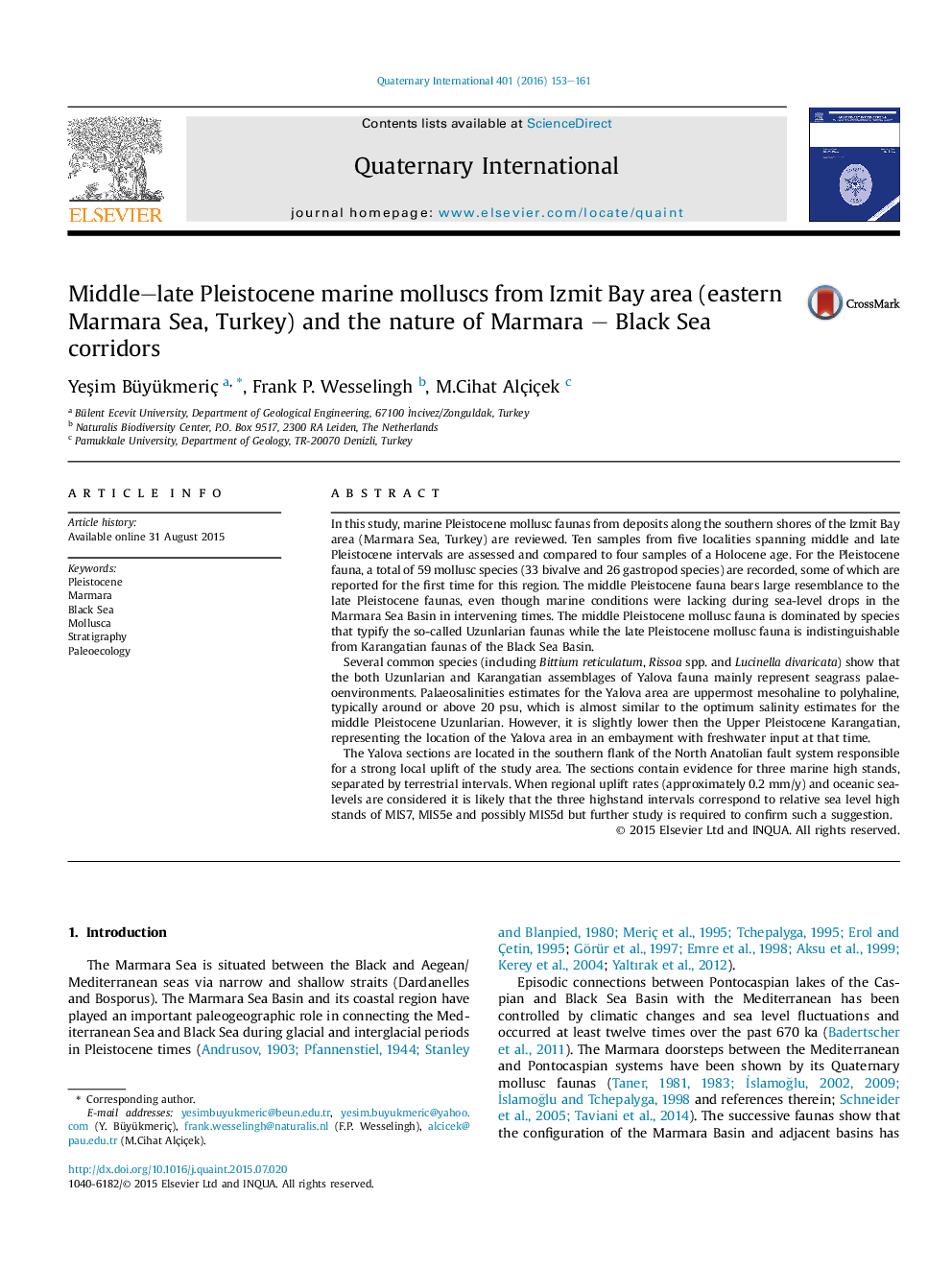| کد مقاله | کد نشریه | سال انتشار | مقاله انگلیسی | نسخه تمام متن |
|---|---|---|---|---|
| 1040181 | 1484097 | 2016 | 9 صفحه PDF | دانلود رایگان |
In this study, marine Pleistocene mollusc faunas from deposits along the southern shores of the Izmit Bay area (Marmara Sea, Turkey) are reviewed. Ten samples from five localities spanning middle and late Pleistocene intervals are assessed and compared to four samples of a Holocene age. For the Pleistocene fauna, a total of 59 mollusc species (33 bivalve and 26 gastropod species) are recorded, some of which are reported for the first time for this region. The middle Pleistocene fauna bears large resemblance to the late Pleistocene faunas, even though marine conditions were lacking during sea-level drops in the Marmara Sea Basin in intervening times. The middle Pleistocene mollusc fauna is dominated by species that typify the so-called Uzunlarian faunas while the late Pleistocene mollusc fauna is indistinguishable from Karangatian faunas of the Black Sea Basin.Several common species (including Bittium reticulatum, Rissoa spp. and Lucinella divaricata) show that the both Uzunlarian and Karangatian assemblages of Yalova fauna mainly represent seagrass palaeoenvironments. Palaeosalinities estimates for the Yalova area are uppermost mesohaline to polyhaline, typically around or above 20 psu, which is almost similar to the optimum salinity estimates for the middle Pleistocene Uzunlarian. However, it is slightly lower then the Upper Pleistocene Karangatian, representing the location of the Yalova area in an embayment with freshwater input at that time.The Yalova sections are located in the southern flank of the North Anatolian fault system responsible for a strong local uplift of the study area. The sections contain evidence for three marine high stands, separated by terrestrial intervals. When regional uplift rates (approximately 0.2 mm/y) and oceanic sea-levels are considered it is likely that the three highstand intervals correspond to relative sea level high stands of MIS7, MIS5e and possibly MIS5d but further study is required to confirm such a suggestion.
Journal: Quaternary International - Volume 401, 16 May 2016, Pages 153–161
